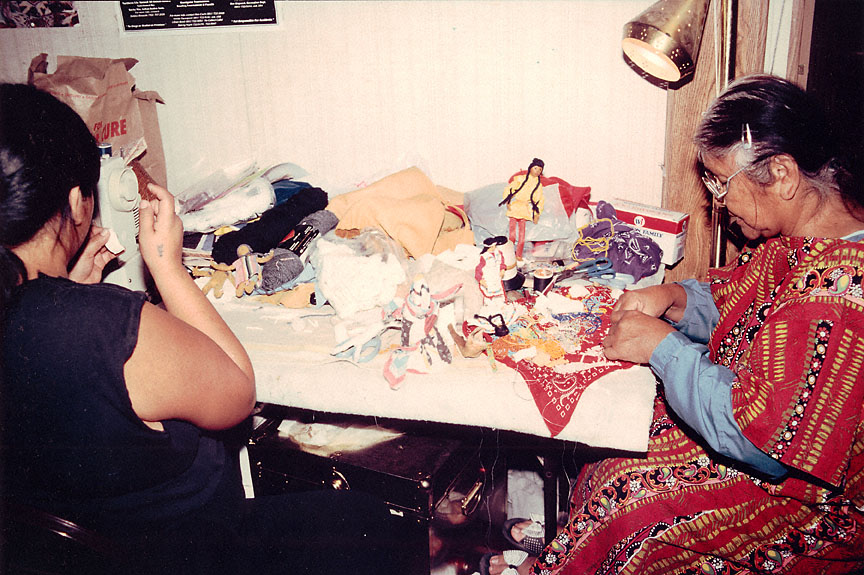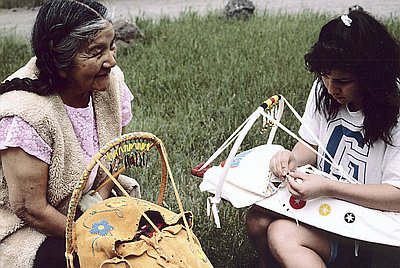- Catalog No. —
- P 2-41
- Date —
- 1991
- Era —
- 1981-Present (Recent Oregon History)
- Themes —
- Arts, Folklife, Native Americans
- Credits —
- Oregon Historical Society Folklife Program
- Regions —
- Central
- Author —
- Unknown
Traditional Warm Springs/Wasco Dollmaking
This photograph was taken in 1991 to document the work of Mary Ann Meanus (on right) as she trained apprentice Rhonda Arthur (on left) in the art of traditional Warm Springs/Wasco doll making. The two women worked together through the Traditional Arts Apprenticeship Program of the Oregon Historical Society Folklife Program.
Mary Ann Meanus was born on the Warm Springs Indian Reservation in 1930. Although she has been making rag dolls all her life, her interest in “collector dolls” in traditional Warm Springs and Wasco dress increased only after she began making them as gifts for friends and family. She learned much of what she knows about the process of doll making from her mother and aunt. It was a Yakama elder who, through a cultural exchange workshop, taught her about the collector dolls. “I try to be as authentic as I can as I make these dolls—all by hand,” she writes. To Meanus, doll making is a way of preserving the culture, dress, and Wasco way of life. “Basket making, stick games—all of my dolls are doing these things.”
Native American doll making is a popular tradition among most Native American groups. Because Native traditions are so different, however, the designs and decorative patterns used by each doll maker are truly unique. Although deerskin and wood were frequently used to construct the dolls, perishable materials like cornhusk and other natural fibers were used as well. The use of such materials was intentional, allowing dolls to fall apart as children grew older. Even though they were not made to last, doll makers still embellished figures with miniature clothing and jewelry, beadwork, fur, and human hair. Today, many artists choose to represent important ceremonial scenes, but it is not uncommon to see dolls representing hunters, fishermen, or people playing games.
Written by Joshua Binus, © Oregon Historical Society, 2005.

